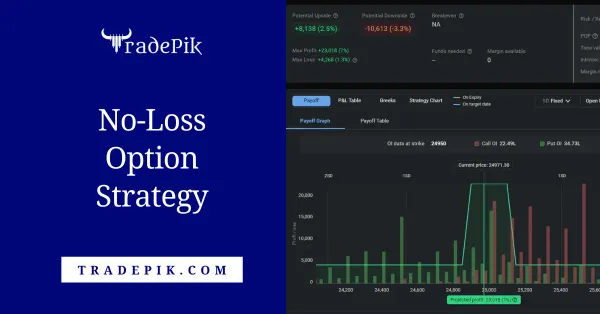SEBI’s New Rules for Option Trading: How Options Traders Can Adapt
Learn how to navigate SEBI’s new rules for option trading. Get insights on adapting your options trading strategies, managing risk, and making the most of this evolving market.

The world of Futures and Options (F&O) trading in India has been hit with some big changes lately, thanks to new regulations introduced by the Securities and Exchange Board of India (SEBI). For traders, whether seasoned or just starting out, these updates bring a new set of challenges—and opportunities. The rules aim to increase oversight and control, but they also mean adjusting your trading strategy is more crucial than ever.
So, how do you stay ahead of the game? Whether you're a veteran trader or dipping your toes into the world of F&O, understanding and adapting to SEBI's new guidelines will be key to maintaining success. In this blog, we’ll break down the recent changes, what they mean for F&O trading, and how you can reshape your strategies to not only survive but thrive in this evolving market.
What Are the New SEBI Rules?
Let’s start with what’s new. SEBI has rolled out several major changes to the F&O landscape. One of the biggest shifts is the increase in the minimum contract size for index derivatives, which has gone from ₹5 lakh to a hefty ₹15 lakh. What does this mean? Well, for smaller traders, this increase might feel like a barrier to entry, and we could see a drop in market liquidity.
Another key change is the limit on weekly expiries, which now restricts them to just one expiry per exchange. This might lead to increased volatility, as traders now have fewer opportunities to make quick, short-term trades. For those who like fast-paced trading, this might come as an unwelcome surprise.
Also, SEBI has mandated that option premiums must be collected upfront instead of at the time of exercise. This adds a new layer of complexity to cash flow management for many traders. If you were relying on paying premiums at a later stage, you’ll now have to plan your finances more carefully.
Lastly, SEBI has tightened margin requirements for F&O trades, meaning traders will need to maintain higher balances in their accounts to continue trading. This could limit the ability of smaller players to hold multiple positions simultaneously.
How Will These Changes Impact Your Trading?
For starters, the increased contract size means that smaller traders may find it more expensive to participate in the market. This could result in fewer players overall, which in turn might reduce the market’s liquidity and make it harder to execute trades efficiently.
The restriction on weekly expiries is likely to add a layer of unpredictability, as volatility may increase with fewer opportunities for short-term trades. Traders accustomed to frequent, small gains from weekly expiries will need to reconsider their strategies. Likewise, the upfront payment of premiums will put additional financial strain on traders, which might discourage those who engage in frequent trading activities.
In short, if you’ve been relying on high-frequency, low-cost trades, you’ll need to pivot to a different approach. The era of rapid-fire trades may be over for some, and a more thoughtful, risk-averse strategy could be the new normal.
How to Adapt Your Trading Strategy
So, how can you adjust your game plan in light of these new rules? Here are a few key strategies to consider:
- Diversify Your Portfolio: The days of relying solely on F&O trades for quick profits might be fading. A smarter approach now would be to diversify your investments. Consider mixing in other asset classes, like stocks, bonds, or mutual funds, to reduce risk and create more stable returns over time.
- Switch to Positional Trading: With the new limits on weekly expiries, traders might find success by switching from intraday to positional trading. Focusing on monthly expiries rather than weekly ones gives you more time to analyze market trends and make informed decisions. It’s a slower, more calculated way to trade, but it can help you ride out the increased volatility and minimize losses.
- Hedging is Your Friend: In this new environment, hedging will be more important than ever. Techniques like protective puts or covered calls can help cushion potential losses, especially when the cost of trading has risen. While hedging doesn’t eliminate risk, it allows you to limit your downside while still leaving room for potential gains.
- Seek Out Mentorship: Now more than ever, learning from seasoned traders could be invaluable. Experienced traders who have weathered market shifts can offer insights that textbooks or online articles simply can’t provide. A mentorship program can give you practical guidance on adapting your strategy to meet these new challenges head-on.

Additional Suggestions for Traders
Staying updated on market news and any future regulatory changes is crucial. SEBI may continue to introduce new rules, so being informed will help you stay ahead. Consulting with a financial advisor is also a smart move, especially if you’re unsure about how these changes impact your specific trading activities. An expert can provide personalized advice to help you adjust your strategy effectively.
Patience is another key factor. These changes will take time to fully understand and adapt to, so avoid making rushed decisions. Take a step back, review your approach, and make calculated adjustments to ensure long-term success.
Conclusion
The new SEBI rules for F&O trading in India present both challenges and opportunities for traders. While the increased contract sizes, limited weekly expiries, and upfront premium collection may complicate things, these changes also offer a chance to refine your strategies. By diversifying your portfolio, adopting positional trading, and implementing hedging techniques, you can successfully navigate this evolving landscape.
If you’re looking for more guidance, consider joining our mentorship program. Our experts can help you develop strategies that align with these new regulations and keep you on the path to success.
Looking for personalized advice on how to navigate the new SEBI F&O rules? Join our mentorship program and get expert insights tailored to your trading style.







